In the age of advanced technology and high technology, it is unlikely that there will be a family that has refused the help of an “automated friend”. How to choose a household gadget for your home, in particular a vacuum cleaner, is an issue that worries many who have decided to purchase a "robotic assistant." Today we will tell you about what technical characteristics it is important to keep in mind when buying a high-quality device, as well as provide an overview of modern models of vacuum cleaners by comparing them with basic parameters. Having carefully studied the information contained in the article below, you will once and for all understand how to choose the right vacuum cleaner so that in the future this purchase will bring only joy, and not complete disappointment from unjustified expectations.
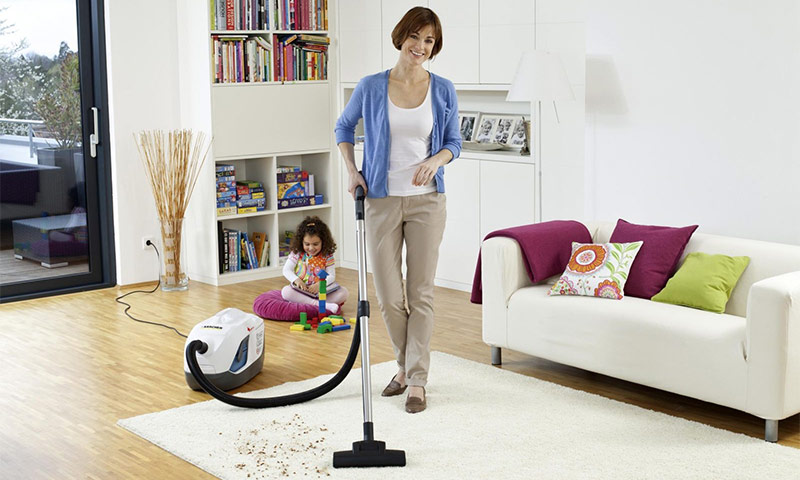
Content
Types of Vacuum Cleaners
First of all, when analyzing the range of presented models of multifunctional “cleaning devices”, it is worth paying attention to their classification by the type of possible cleaning. This criterion makes it possible to distinguish between gadgets for vacuum cleaners:
- for dry cleaning;
- for wet cleaning.
For dry cleaning
It is logical to assume that gadgets for traditional cleaning require exclusively “dry dust suction” for the user, without the possibility of washing the floor or eliminating liquid contaminants. The main advantage of this type of device is its reasonable price set by the manufacturer in the consumer market. In addition to the low price, the undoubted advantages of such vacuum cleaners include the simplicity of design in direct operation and maintenance, especially in the case of regular cleaning of small rooms.
However, in order to form an objective assessment necessary for making a decision on the purchase of a particular model, it is advisable to mention the disadvantages of vacuum cleaners with the function of dry cleaning. Even the best, most powerful unit is not capable, due to its design, of eliminating the “raising” of dust and, as a result, pollution, potential allergens into the air during the cleaning process. The mentioned drawback is extremely important, especially in the case of using the selected technique by an allergy sufferer or a person predisposed to the manifestation of allergic reactions of various origins. In addition, it is worthwhile to understand that, according to the principle of their action, vacuum cleaners for dry cleaning are not designed to qualitatively get rid of dirt from a smooth floor covering, for example, laminate, parquet, linoleum and so on.
For wet cleaning
In contrast to the considered type of gadgets, vacuum cleaners with the function of wet cleaning do not mean just “suction” of dust, but complete washing of floors or pile coatings, thanks to a special mechanism that “sprays” the detergent, and a reservoir for further collection of waste liquid.
In addition to assisting with a thorough cleaning, washing vacuum cleaners good quality have the function of disinfection of the treated surface, the ability to wash windows and even pipes, as well as the option of aromatization of air. Undoubtedly, the availability of the floor washing option in the “automated assistant” is most relevant for large houses and apartments with a large area, since traditionally such constructions cannot be called compact.
Based on the above first classification, we can formulate the second, no less important for the buyer when analyzing the assortment of electrical goods. According to the type of dust collector, vacuum cleaners can be classified into:
- bagged;
- cyclone;
- with aquafilter.
Bag
Bag Filter Devices involve the absorption of dry dirt in a fabric bag. Such cleaning elements can be disposable or reusable, requiring regular cleaning. The main advantage of disposable filtering devices is the maximum hygiene of the “development”, due to the exclusion of the possibility of “discharge” of collected dust into the air. Also among the advantages of this type of vacuum cleaners can be noted the reliability of the design, due to the simplicity of the precast mechanism.
On the other hand, despite the advantages, a significant drawback of using a bag filter is the need to buy replaceable cartridges (in the case of a disposable design) or regularly “shake out” a reusable dust collector, which is not always thought out by the manufacturer in terms of speed, simplicity and convenience of the filter cleaning process.
With cyclone filter
Going to choose and subsequently buy cyclone filter vacuum cleaner for cleaning an apartment or house, it is also important to know the basic advantages and objective disadvantages of their use. In devices of this type, dry dirt accumulates in a special container, traditionally made of plastic. The material and design of the dust collector allow you to not only quickly and easily remove the collected garbage after each cleaning, but also to wash the filter itself. In addition to ease of care, it is important to emphasize another advantage - the manufacturer’s minimized risk of malfunctions in the direct functionality of the device due to the filter “clogging”. This is made possible thanks to the “cyclone” dust suction technology, which evenly distributes it in the pollution tank.
However, due to the maximum comfort in using the technology of "automated assistants" with cyclone filters, it is unlikely that the buyer will be able to find a quality inexpensive model, in particular, up to 5000 rubles. In an effort to get quality in the assembly and functionality of the vacuum cleaner, you should not save, but it is better to turn to device models that form the rating of vacuum cleaners in the price category at least up to 10,000 rubles.
With aquafilter
Aquafilter Gadgets provide for cleaning the air blown out by a vacuum cleaner with a tank filled with ordinary water or a special soap solution. Moreover, most models of the devices under consideration are equipped with a HEPA filter, which is considered ideal for the gadget used by an allergy sufferer. This characteristic of HEPA-technology is due to its high ability to "hold" the smallest particles of dirt and dust, able to "overcome" the protection of the main aquafilter. The advantages of “water vacuum cleaners”, in addition to the possibility of their operation by allergy sufferers, include the high quality of cleaning not only the floor covering, but also the air in the “processed room”.
Speaking of imperfections and possible inconveniences during the cleaning process by an “automated assistant” with an aquafilter, it is advisable to note the mandatory cleaning, washing and drying of each structural element after each use cycle, due to the existing likelihood of mold formation in it during constant contact with liquids.
Having decided on the choice of a vacuum cleaner of the desired type of cleaning with the type of dust collector you need, it is logical to think about the convenience of its storage and physical comfort in operation. By their design, cleaning devices are traditionally classified into:
- traditional, floor;
- vertical
- built-in;
- robotic vacuum cleaners;
- portable devices.
Traditional
The first type of gadget is the familiar floor construction, which the user moves with wheels (plastic or rubber) or an “air cushion”. Their undoubted advantage is the versatility created by prefabricated handles, flexible hoses, a variety of additional brush heads, for example, for cleaning crevices or furniture. However, deciding to purchase a traditional type of vacuum cleaner, it is worthwhile to think over the place of its storage in advance, since most models of the class in question have impressive weight and dimensions.
Vertical
Vertical gadgets usually designed by manufacturers as battery-powered wireless devices that work offline for up to 40 minutes. In this case, dust collectors are mounted in the vicinity of the handle, which significantly reduces the overall dimensions of the whole structure and makes it easy to find a place to store in an apartment or house with a small area. Another plus is the maneuverability and quality of cleaning smooth floors inherent in this type of vacuum cleaner due to the design thought out by the developers.
Despite the fact that the “automated assistant” with the option of vertical parking will usually be light and compact, the buyer should bear in mind the possible difficulties associated with the need to operate it at a strictly defined angle of inclination. Moreover, some battery models are simply not designed to wash pile surfaces.
We suggest you also look at wire vertical vacuums.
Built in
Built-in centralized cleaning systems installed during renovations are usually found in public areas or large-area houses. The system under consideration provides for the integration of the power unit in the office or basement, and pipes along the perimeter of the walls, floor and ceiling. The pipeline is connected by pneumatic sockets installed in several rooms. The user needs to walk through the rooms with a special hose with a pipe and a brush connected to one of the outlets. The pros and cons of the built-in technology are obvious: high-quality cleaning and the high cost of installing equipment, respectively.
Robot
Vacuum cleaning robots gaining more and more popularity among housewives lately. The “scheduled cleaning” option enables the user to set the required frequency of cleaning the premises and observe the robot independently executing a given command. A robotic gadget is an excellent option for people spending a lot of time at work or on business trips, since there is no need for user intervention in the cleaning process. However, it is worth noting that the robot, "bumping" into certain objects in the room and having a limited battery charge, will be able to cope well only with a simple, surface cleaning. This implies their main drawback - high cost with low quality of fulfillment of their primary purpose - cleaning the floor covering.
Take a closer look at wet cleaning robots.
Portable
Portable vacuum cleaners include gadgets for cleaning furniture and car seats. Their obvious advantages include portability and compactness; By cons - low suction power and, as a result, low efficiency in the fight against large pollution.
Classifying the household appliances considered in the article by the level of power, it is worth highlighting:
- low power;
- medium power;
- increased power.
In this case, the type of device directly determines the degree of possible contamination with which it can cope.So, low-power vacuum cleaners are advisable to use in apartments for daily cleaning, and gadgets with increased power will be an excellent assistant in the regular cleaning of industrial premises.
It is also important to know about the differentiation of “cleaning” devices by type of control on:
- wired (the vast majority of modern vacuum cleaners presented);
- IR;
- radio waves.
The second and third types are as comfortable as possible in operation and maintenance, but are almost never found in the mass market. If the buyer still manages to encounter a device from one of the last two classes, then he will be extremely amazed to see its high cost.
How to choose
Now, having an idea of the basic classifications of vacuum cleaners for various reasons, we suggest you familiarize yourself with a list of their technical characteristics, as well as selection criteria that are of particular importance when analyzing the existing range of modern models.
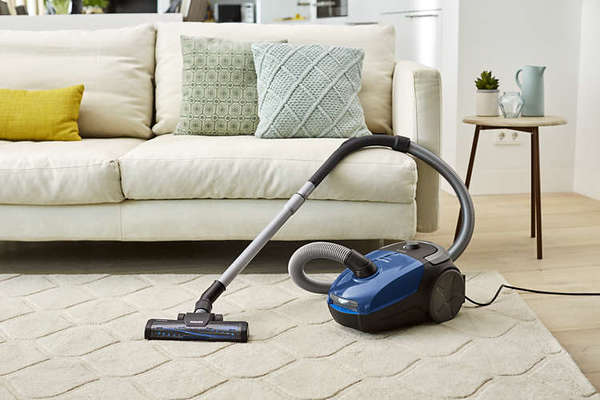
Basic technical indicators are:
- power consumption (illustrates power consumption; optimally - 1500-2000 W);
- suction power (indicates the initial efficiency of the vacuum cleaner in cleaning floor coverings of various types; optimally - 300-400 W);
- filters installed by the manufacturer (reflects the degree and quality of cleaning the air blown out by the vacuum cleaner; ideally - up to 12 degrees of filtration + the presence of a HEPA filter);
- the volume of the generated noise during operation (reflects how loud the cleaning will be accompanied by the selected gadget model under normal environmental conditions; optimally - 72-90 dB);
- the size of the dust collector (the volume of the tank accumulating the collected dust; ideally - from 3 l);
- functional pipe design (characteristic describing the type of handle of the vacuum cleaner; the most convenient is telescopic).
Speaking about the criteria for choosing an “automated” cleaning assistant, we recommend that the following data be considered fundamental:
- Compliance with the optimal technical specifications described above.
- The purpose of the application. At this stage, the buyer needs to formulate the purpose for the purchased gadget, namely washing smooth floor coverings or a large number of carpets with high pile; eliminating furry fur or daily surface wet cleaning in order to maintain cleanliness and “freshness” in an apartment with a newborn and so on.
- The area of the room requiring cleaning. It is logical to give preference to high-power traditional overall vacuum cleaners with a cyclone filter or a HEPA cartridge, a long cable having the maximum number of replaceable nozzles if it is necessary to clean a multi-square country house. In this case, the user, at least, does not have to solve the problem of where to store not only the gadget itself, but also all its components.
- Cost. Vacuum cleaners depending on the availability of additional options and the degree of popularity of their manufacturer will have a huge "spread" in prices. The buyer needs to determine a personal limit, based on which, it will be possible to form a specific model line corresponding to the financial capabilities of the user.
- Equipment. Do not “chase” the quantity in this matter, since most interchangeable nozzles that ultimately increase the cost of the device on the store counter will be completely unclaimed. And to store a large number of brushes is not always convenient, especially in an apartment with an average area. It is important to make sure that there are basic types of nozzles: floor / carpet, for furniture and crevice brush.
- Additional characteristics, implying the presence of various indicators of dust collector fullness, water pollution in the aquafilter, drop sensors, overheating, and so on; extended warranty period, as well as the name of the manufacturer, illustrating a kind of “stereotyped brand” of the brand, based on the opinion of most consumers.
Having specified the main technical indicators, we suggest that you turn to the review of the top 10 rating models of modern vacuum cleaners.
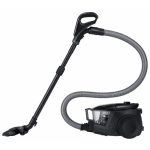 |  |  | 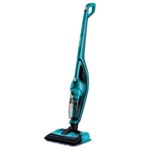 |  | 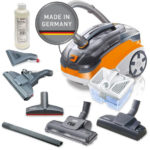 | 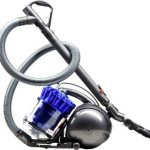 |  | 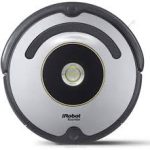 | 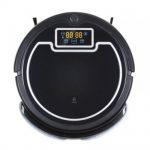 |
|
| Title | Samsung VC18M3160 | Bosch BGL35MOV15 | Makita BCL 180 Z | Philips FC6404 Power Pro Aqua | Thomas TWIN Panther | Thomas Aqua Pet & Family | Dyson DC37 Allergy Musclehead | Xiaomi Mi Robot Vacuum Cleaner | iRobot Roomba 616 | PANDA X900 Wet Clean |
| Cleaning | dry | dry | dry | dry and wet | dry and wet | dry and wet | dry | dry | dry | dry and wet |
| Power consumption | 1800 watts | 2200 watts | - | - | 1600 watts | 1700 watts | 1300 watts | 55 watts | 33 watts | - |
| Dust collector | bagless (cyclone filter), 2 l capacity | 4 l bag | bagless (cyclone filter), 0.65 l capacity | bagless (cyclone filter), 0.60 L capacity | 4 l bag | 1.80 L water filter | bagless (cyclone filter), 2 l capacity | bagless (cyclone filter) | bagless (cyclone filter), 0.50 L capacity | bagless (cyclone filter), 0.40 l capacity |
| Price | from 6100 rub. | from 6700 rub. | from 2650 rub. | from 17900 rub. | from 10000 rub. | from 17950 rub. | from 20,000 rub. | from 17500 rub. | from 19900 rub. | from 13900 rub. |
The best models
We present to your attention a rating of the best models of vacuum cleaners of 2019, based on customer reviews.
For dry cleaning
Samsung VC18M3160
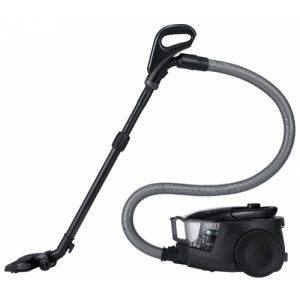
- Types of cleaning: dry
- Maximum power consumption during operation: 1800 W
- Suction Power: 380 W
- Dust collector type: cyclone filter
- Dust box capacity: 2 L
- Noise Level: 87dB
- Cable length: 6m
- Weight: 4.8 kg
- Additional nozzles: yes (floor / carpet; nozzle 2-in-1)
- Built-in options: built-in power regulator, presence of a fine filter, Anti-Tangle turbine (prevents hair, wool and dust from winding up on the filter), Easy Grip rotary handle
- light weight
- maneuverability
- acceptable noise level
- collapsible turbo brush
- good suction power
- electrostatic material of the housing
- insufficient cable length
- lack of basic nozzles, in particular, for furniture
In our next article you can learn more about the model range vacuum cleaners samsung.
Bosch BGL35MOV15

- Types of cleaning: dry
- Maximum power consumption during operation: 2200 W
- Suction power: 320 W
- Dust Collector Type: Cloth Bag
- Dust box capacity: 4 L
- Noise Level: 82 dB
- Weight: 4.6 kg
- Additional nozzles: there is (carpet / floor; crevice; for upholstered furniture; for hard floors)
- Built-in options: built-in power regulator, the presence of a fine filter, ten-meter radius of action
- thoughtful hose inlet
- quality hose material
- build quality
- power adjustment
- imperfect maneuverability
- inconvenience of using separate brush heads
- high noise generated during operation
Vertical vacuum cleaners
Makita BCL 180 Z
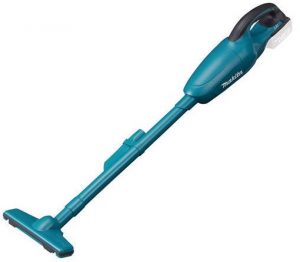
- Types of cleaning: dry
- Maximum power consumption during operation: 1700 W
- Suction power: 30w
- Dust collector type: cyclone filter
- Dust container capacity: 0.65 L
- Noise Level: 71 dB
- Weight: 1.2 kg
- Additional nozzles: yes (for the floor; slotted; extension tube)
- Built-in options: the ability to work on battery power, the presence of a fine filter
- compactness
- ease of use
- acceptable suction power
- “Poor” equipment
- lack of cables or battery charger as standard
- high noise level during the work
Philips FC6404 Power Pro Aqua

- Types of cleaning: dry, wet
- Maximum power consumption during operation: 1800 W
- Dust collector type: cyclone filter
- Dust box capacity: 0.60 L
- Noise Level: 83dB
- Cable length: 6m
- Weight: 3.2 kg
- Additional nozzles: there is (TriActive turbo, microfiber rag)
- Built-in options: liquid collection function, the possibility of vertical storage, the option of autonomous wireless operation, a 0.2 liter plug-in container for wet cleaning with water or detergent
- long battery life
- maneuverability
- light weight
- the need for thorough regular cleaning of the dust bag
- the impossibility of cleaning the floor under the furniture, due to the ill-conceived design of the nozzle
- insufficient suction power
- “Unfastening” individual nozzles during direct cleaning
- high noise generated by work
With wet cleaning function
Thomas TWIN Panther

- Types of cleaning: dry, wet
- Maximum power consumption during operation: 1600 W
- Dust Collector Type: Cloth Bag
- Dust box capacity: 4 L
- Noise Level: 81 dB
- Cable length: 6m
- Weight: 8.4 kg
- Additional nozzles: yes (floor / carpet, for wet cleaning, for upholstered furniture, crevice, adapter for smooth surfaces)
- Built-in options: liquid collection function, the possibility of vertical storage, removable 2.4 liter detergent tank; dirty water tank 4 l
- high-quality cleaning
- a large number of interchangeable nozzles
- function of "washing" carpet
- low quality of individual fasteners
- the presence of stains on the floor after wet cleaning
- lack of nozzles for water absorption from a smooth floor covering
In our next article you can learn more about the model range vacuum cleaners thomas.
For an apartment with pets
Thomas Aqua Pet & Family
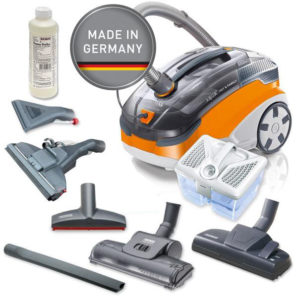
- Types of cleaning: dry, wet
- Maximum power consumption during operation: 1700 W
- Dust collector type: aquafilter
- Dust container capacity: 1.80 L
- Noise Level: 81 dB
- Cable length: 8m
- Weight: 8 kg
- Additional nozzles: there is (carpet, for removing wool; for cleaning upholstered furniture; elongated crevice; spray for wet cleaning of the floor / carpets; spray for wet cleaning of upholstered furniture)
- Built-in options: fluid collection function, power regulator integrated in the housing, fine filter
- a large number of additional nozzles
- power
- simplicity of assembly and operation
- small volume of detergent tank
- bulkiness of the design
- low build quality of individual functional elements
For allergy sufferers
Dyson DC37 Allergy Musclehead
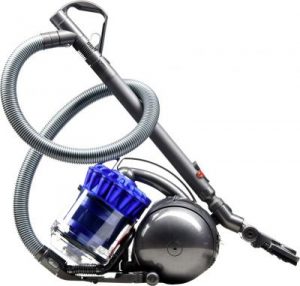
- Types of cleaning: dry
- Maximum power consumption during operation: 1300 W
- Suction Power: 290 W
- Dust collector type: cyclone filter
- Dust box capacity: 2 L
- Noise Level: 82 dB
- Cable length: 6.5m
- Weight: 5.2 kg
- Additional nozzles: there is (for upholstered furniture; crevice / brush; universal Musclehead with automatic switching modes for cleaning all types of coatings and under low-furniture)
- Built-in options: approved by researchers for allergy sufferers, the presence of a fine filter
- maneuverability
- acceptable noise level
- simplicity of leaving and operation
- case material quality
- appearance
- lack of regulators on the device handle
- inconvenient "blowing" of hot air into the floor
- electrostatic material of the housing
- low quality of individual fasteners
- insufficient suction power
Dry cleaning robots
Xiaomi Mi Robot Vacuum Cleaner
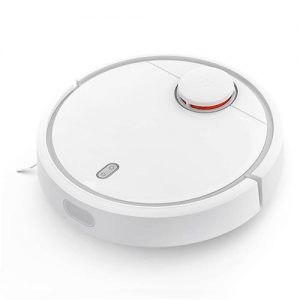
- Types of cleaning: dry
- Type of cleaning available: local, quick
- Battery capacity: 5200 mAh
- Battery life: up to 150 min
- Dust collector type: aquafilter
- Maximum Power Consumption: 55 W
- Weight: 3.8 kg
- Built-in options: building a room map, support for the Mi Home smart home system; laser distance sensor, scheduled cleaning function
- quality assembly
- ease of cleaning the dust bag
- adjustable suction power
- maneuverability
- high noise generated during operation
- slow reaction of the robot to a remote user command
- body material unstable to external damage
- insufficient dust bag
iRobot Roomba 616

- Types of cleaning: dry
- Type of cleaning available: local
- Battery capacity: 2200 mAh
- Battery life: up to 120 min
- Battery Charging Time: 180 min
- Dust collector type: cyclone filter
- Dust box capacity: 0.50 L
- Maximum Power Consumption: 33 W
- Noise Level: 60 dB
- Weight: 3.6 kg
- Built-in options: the presence of a "virtual wall", the ability to connect an electric brush, the presence of a fine filter
- high-quality cleaning of flooring
- quality assembly
- thoughtful appearance
- chaotic cleaning algorithm
- periodic interruptions to the connection with the "base"
- high noise generated during operation
Wet cleaning robot
PANDA X900 Wet Clean

- Types of cleaning: dry, wet
- Type of cleaning available: local
- Battery capacity: 2000 mAh
- Battery life: up to 120 min
- Charging time: 300 min
- Dust collector type: cyclone filter
- Area for cleaning: 70 m2
- Suction power: 65w
- Noise Level: 50dB
- Weight: 3 kg
- Built-in options: “virtual wall”, additional brushes - nozzles, display, fine filter
- appearance
- convenience of cleaning the dust bag
- compactness
- poor overcoming obstacles
- chaotic cleaning scheme
- low quality of individual fasteners
Having studied the information presented above, any buyer can easily choose for himself the most optimal vacuum cleaner in every sense, the use of which will bring exclusively positive emotions.


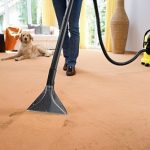

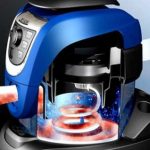
I also recently bought a vacuum cleaner - Samsung. I basically love this company. I liked everything about it, from its design and container volumes. But there is one big minus, all the housewives agree with me - these are vacuum cleaner filters. Each time you just have to shake off the filters, then wash. Not every day, but every time. Filters get clogged with dust very quickly. This can be seen by the mini light bulb installed at the top of the vacuum cleaner - lights up in red. Maybe he really, because of his power, sucks everything out clean?) They took 6,500 rubles. And there is noise too. But I still really like the vacuum cleaner.
I have been using the dyson DC 29 vacuum cleaner for the third year already. High suction power. I am always surprised at the amount of dirt collected in the dust collector, even though the apartment seems clean before cleaning. I take out the contents of the dust bag outside, otherwise the dust will fly around the room. The kit included nozzles. I use one of them when cleaning the stroller, sofa. I don’t use the rest. The vacuum cleaner is noisy, but it doesn’t bother me. I bought it for shares for 16,000.0 rubles.
I have a LG vacuum cleaner at home. Thank God he works properly. Powerful and good dust collector-roomy. He collects fine dust, at least visible. A noisy, high-quality product does not work, although it’s certainly not cheap, but it costs its money. Nowadays, a very large number of high-quality vacuum cleaners have been divorced at various prices.
I bought a Philips FC 9064 vacuum cleaner and am very happy with it. Two years serves faithfully. I chose between vacuum cleaners with and without bags, but communicating with a consultant, all the same, taking into account all my requests, he advised me to choose with a bag to collect garbage and dust. A year and a half after the start of use, my filter broke, I replaced it myself, and at the same time I picked up not even a native one, but an analog one. Cleans no worse, dust sucks from the floor and parquet equally well.
Do not take out the brain for people, the best ones are just powerful and that there would be replaceable paper filters (I filled it out, forgot it) and the rest is all from the evil one, and whoever bought terribly regrets and praises with anger not to be alone, well, gentlemen do not LIE to you the desire to clean and wash this filter when everything flies around, well, do not lie